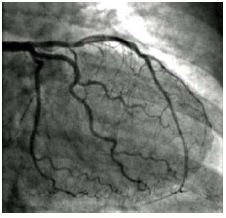Angiography is such an imaging test where X-ray is used to view the blood vessels of the body. This test is used to study whether the arteries or veins are narrow, blocked or enlarged in the body. The normal flow of blood is obstructed in the body when the blood vessels are blocked and they are narrow or not wide. During angiogram the physicians inject a liquid through a thin and flexible tube into the patient’s body. The liquid is called ‘dye’ and the tube is called ‘catheter’. The blood vessels become visible on an X-ray due to the use of dye. This dye is later eliminated from the body through kidneys and urine. Through a definite entry point the catheter is introduced into a definite artery or vein. The entry point may be in any blood vessel of the body. Sometimes, the ‘dye’ used is also termed as ‘contrast’.

The causes for which the physicians generally recommend an angiogram are as follows-
- Blockages of the arteries outside the heart.
- Enlargement of the arteries
- For understanding the kidney artery conditions
- Problems with veins
Sometimes the physicians can also treat a blockage in a blood vessel without any surgery during an angiogram. The mechanism or the procedure following which the blocked arteries are cleared during an angiogram is called angioplasty.













